Graphite, a mineral variety of carbon, is extensively utilized across various sectors because of its distinctive attributes such as thermal conductivity, lubricity, and electrical conductivity. However, natural graphite typically contains impurities, necessitating their removal to obtain graphite of high purity for industrial usage. Flotation methods have demonstrated their efficacy in the separation of graphite from these impurities. This detailed guide delves into the different flotation methods employed in graphite processing and how they facilitate the purification journey.
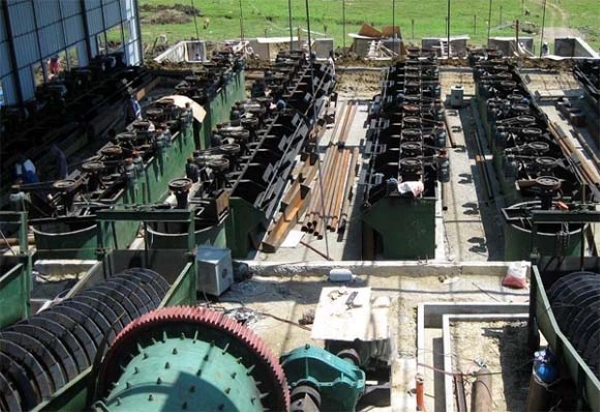
01Understanding Flotation Methods
1. What is Flotation?
Flotation is a mineral processing technique that capitalizes on the dissimilar surface properties of minerals to isolate them from one another. This process involves the selective adherence of air bubbles to the valuable mineral particles, causing them to float to the surface of the flotation cell as泡沫 (foam), where they can be mechanically skimmed off, leaving behind the unwanted gangue or impurities.
2. Significance of Flotation in Graphite Processing
Flotation is a pivotal process in graphite processing as it allows for the separation of graphite from a variety of impurities. Graphite ores frequently contain minerals such as quartz, mica, feldspar, and other carbon-based materials, which must be removed to yield high-purity graphite. Flotation methods effectively address this challenge by selectively attaching air bubbles to the hydrophobic graphite particles, enabling their separation from the hydrophilic impurities.
02Flotation Methods in Graphite Processing
1. Traditional Flotation
Traditional flotation is a standard method extensively used in graphite processing. It involves adding specific chemical reagents to the graphite ore slurry, which makes the graphite particles hydrophobic. Once air bubbles are injected into the slurry, the hydrophobic graphite particles adhere to these bubbles and float to the surface as froth. The froth, containing the graphite concentrate, can then be skimmed off mechanically.
2. Column Flotation
Column flotation represents an advanced variation of traditional flotation, offering enhanced performance in graphite processing. In this approach, a tall column filled with finely dispersed air bubbles is utilized instead of a standard flotation cell. The heightened concentration of air bubbles within the column improves flotation kinetics and the recovery of graphite particles, making it particularly effective for capturing fine graphite particles that might be lost during conventional flotation.
3. Reverse Flotation
Reverse flotation is employed when the impurities in the graphite ore are more hydrophobic than graphite itself. This technique involves adjusting the flotation conditions and chemical reagents to selectively float the impurities, while the graphite particles remain in the slurry. By meticulously controlling the pH and employing suitable collectors and frothers, impurities like silicates and sulfides can be separated, leading to a purified graphite concentrate.
03Factors Influencing Graphite Flotation
Several factors significantly impact the efficiency and effectiveness of graphite flotation.
1. Particle Size and Liberation
The particle size and liberation properties of graphite are crucial factors in achieving successful flotation. Finely ground graphite particles generally exhibit improved flotation performance due to a larger surface area for bubble attachment. Moreover, the liberation of graphite from the gangue minerals is vital for optimal recovery.
2. Graphite Ore Grade
The grade of the graphite ore, which denotes the carbon content, substantially affects the flotation process. Higher-grade ores typically result in higher graphite recoveries and purities. However, economically viable processing of lower-grade ores can be achieved by optimizing flotation conditions and utilizing appropriate reagents.
3. Impurity Composition
The type and composition of impurities present in the graphite ore can influence the flotation process. Specific chemical reagents and flotation conditions may be required to effectively separate different impurities. Thus, understanding the impurity composition is essential for designing a tailored flotation circuit.
4. pH and Chemical Reagents
The pH level of the flotation pulp and the choice of chemical reagents play a pivotal role in graphite flotation. The pH affects the charge properties of the minerals and the efficiency of collectors and frothers. Establishing optimal pH conditions is crucial for achieving the desired flotation outcomes.
04Refining Graphite through Flotation Chemicals
In the intricate process of graphite purification, the judicious use of chemical reagents is indispensable. These chemicals are the cornerstone of flotation techniques, ensuring the selectivity and efficiency of graphite extraction from impurities. Let's delve into the three primary types of reagents utilized in graphite flotation.
1. Collectors: The Heart of Flotation
Collectors are the chemical workhorses in flotation, responsible for transforming graphite particles into hydrophobic entities that readily attach to air bubbles. Hydrocarbons, fatty acids, and their derivatives are commonly employed for their selective adsorption properties. The selection of the collector is a balancing act, influenced by the ore's unique characteristics and the nature of the impurities it holds.
2. Frothers: The Foaming Framework
Frothers play a critical role in the flotation process by stabilizing the froth, which is crucial for the mobility and proper distribution of air bubbles. They contribute to the creation of a micro-bubble environment that is conducive to the attachment of collector-coated graphite particles. Alcohols, glycols, and polyglycols are frequently used as frothers, enhancing froth stability and facilitating the separation of the graphite-rich froth from the impurities.
3. pH Modifiers: The Alchemical Influencers
pH modifiers are essential in fine-tuning the flotation pulp's pH to the optimal range for effective graphite flotation. These reagents alter the charge properties of the minerals, influencing their interaction with collectors and frothers. Depending on the specific separation goals, alkaline or acidic agents are added to achieve the ideal pH balance, ensuring the best possible flotation outcomes.
05Enhancing Graphite Flotation Efficiency
Elevating the flotation process to its full potential is paramount in the quest for high-purity graphite concentrates and peak recovery rates. This involves a multi-faceted approach that ranges from comprehensive ore analysis to meticulous process oversight.
1. In-Depth Ore Analysis and Experimental Evaluation
A foundational step in the optimization process is to conduct a thorough examination of the ore's composition and its response to flotation. Laboratory experiments help decipher the ore's mineralogical makeup, liberation behavior, and the effectiveness of various reagents. This knowledge is instrumental in choosing the most suitable flotation methods and conditions tailored to the ore's unique properties.
2. Strategic Flotation Circuit Configuration
The design of the flotation circuit is a delicate balance of art and science. It encompasses the selection of the right flotation cells, the precise measurement of reagent quantities, and the optimization of operational parameters. Key considerations include the residence time, pulp density, and froth depth, all of which significantly impact graphite recovery and impurity rejection.
3. Proactive Process Management and Continuous Monitoring
To maintain peak flotation performance, the implementation of robust process control and monitoring systems is non-negotiable. The constant surveillance of critical parameters—such as pH levels, reagent dosages, froth quality, and concentrate grade—allows for prompt adjustments and ensures that the flotation process remains efficient and consistent.
06Environmentally friendly Graphite flotation: Exploration of green technology
While pursuing the efficient extraction of graphite, we must pay attention to the impact on the environment. In order to achieve this, graphite flotation operations must take a series of measures to reduce the impact on the ecosystem.
1. Water conservation and recycling
Water is an indispensable resource in flotation operation. Therefore, we must take measures to reduce water consumption and ensure sustainable management of water resources. By recovering and reusing process water, as well as optimizing the water circulation system, we can significantly reduce the water footprint of the graphite flotation plant.
2. Application of green chemical reagents
In the flotation process, the selection of chemical reagents is very important. Priority should be given to the use of environmentally friendly, biodegradable reagents to reduce environmental impact. At the same time, ensure that the reagents are properly stored, handled and ultimately disposed of to prevent any potential environmental contamination.
3. Sustainability of tailings treatment
Tailings are a by-product of flotation operations, and their treatment and management are of great importance to environmental protection. Tailings storage facilities should be designed and operated in accordance with industry best practices to guarantee their long-term stability and minimize the risk of contamination to water and soil.
07Future Trends in Graphite Flotation
Graphite flotation is a continually evolving field, driven by advancements in technology, sustainability concerns, and ongoing research and development efforts. Several future trends are expected to shape the landscape of graphite flotation.
1. Advancements in Flotation Technology
The development of new and improved flotation technologies is expected to enhance the efficiency and effectiveness of graphite flotation. Researchers and engineers are exploring novel flotation equipment designs, such as high-capacity flotation cells and advanced column flotation systems, to optimize graphite recovery and concentrate purity. These advancements aim to overcome challenges associated with fine particle flotation, improve froth stability, and increase the overall flotation performance.
Moreover, the integration of automation, artificial intelligence, and machine learning in flotation systems holds great promise. Real-time monitoring and control systems can optimize process conditions, reagent dosages, and flotation parameters based on data analysis, leading to improved flotation outcomes and reduced operational costs.
2. Sustainable Flotation Practices
In recent years, there has been a growing focus on sustainable practices in the mining industry, including graphite flotation operations. The adoption of sustainable flotation practices aims to minimize the environmental impact, reduce energy consumption, and optimize resource utilization.
One area of interest is the development of eco-friendly reagents for graphite flotation. Researchers are exploring alternative collectors and frothers derived from renewable sources or utilizing bio-based materials. These sustainable reagents not only reduce the environmental footprint but also offer comparable or improved performance in terms of graphite recovery and concentrate quality.
Additionally, efforts are being made to optimize water management and reduce water consumption in flotation plants. Water recycling, efficient tailings dewatering, and advanced water treatment technologies are being implemented to minimize freshwater usage and ensure responsible water stewardship.
3. Research and Development
Research and development (R&D) initiatives play a crucial role in driving innovation and advancing the field of graphite flotation. R&D efforts are focused on gaining a deeper understanding of the fundamental aspects of graphite flotation, including ore mineralogy, particle interactions, and the role of various flotation parameters. This knowledge is vital for developing new strategies, optimizing existing processes, and addressing specific challenges associated with different graphite deposits.
Furthermore, ongoing research aims to explore alternative beneficiation techniques beyond conventional flotation. Techniques such as gravity separation, electrostatic separation, and hydrometallurgical methods are being investigated to complement or replace flotation in certain scenarios. These alternative approaches may offer additional opportunities for improving graphite recovery and concentrate quality, especially for complex or low-grade ores.
Collaboration between researchers, industry stakeholders, and academic institutions is crucial to facilitate knowledge sharing, technology transfer, and the development of innovative solutions in graphite flotation.
08Conclusion: The Future of Graphite Flotation Technology
The graphite market is witnessing a transformative shift with the advent of advanced flotation methods. These techniques are pivotal in the efficient extraction of graphite from contaminants, offering a suite of options such as conventional, column, and reverse flotation processes to produce high-purity concentrates.
Several critical factors, including particle size, liberation properties, ore quality, impurity profile, pH levels, and the choice of reagents, significantly affect the success of the flotation process. A comprehensive understanding of the ore's characteristics, coupled with optimized flotation circuit design and stringent process control, is essential to enhance graphite recovery and refine concentrate quality.
Looking ahead, the graphite processing sector is poised for further innovation. Upcoming trends in flotation technology are expected to concentrate on technological breakthroughs for enhanced performance, the adoption of sustainable practices to reduce environmental impact, and continuous research for novel solutions. By integrating these developments, the industry can respond to the escalating demand for superior graphite products while keeping environmental stewardship at the forefront.
- Random article
- Popular articles
- Popular comments
- Hg-ore flotation process
- Gravity combined beneficiation process for wolframite ore
- Nickel ore magnetic separation+flotation combined process(Sulfide ore)
- Copper-Molybdenum Ore Separation & Flotation Process
- Titanium Ore Processing: Gravity, Magnetic, Flotation, Electric Separation
- Tantalum-Niobium Ore Gravity Separation Methods
- Tantalum-Niobium Ore Combined Beneficiation Guide

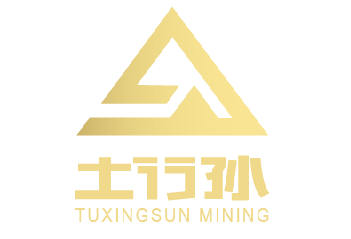

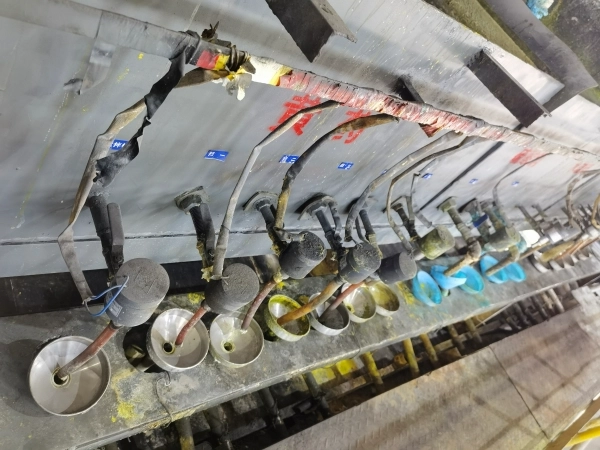
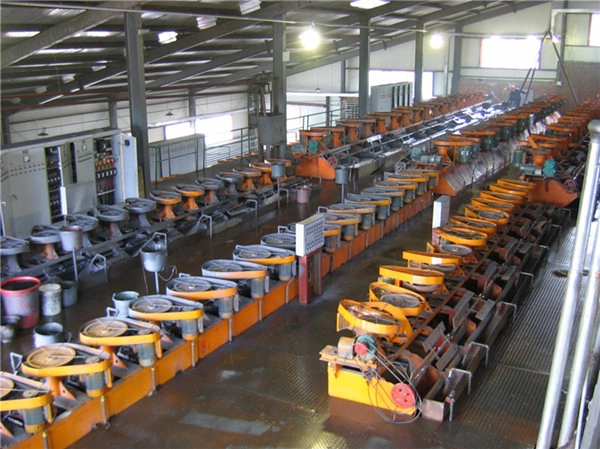
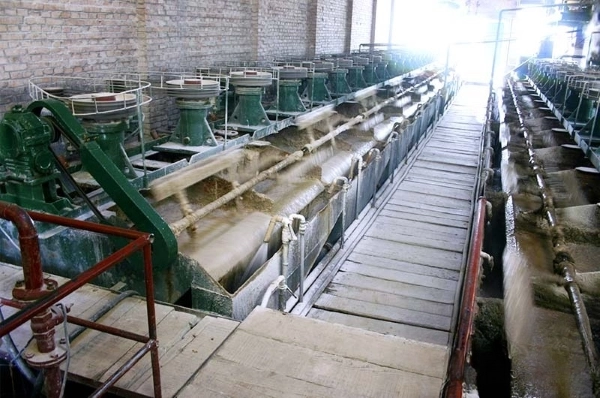
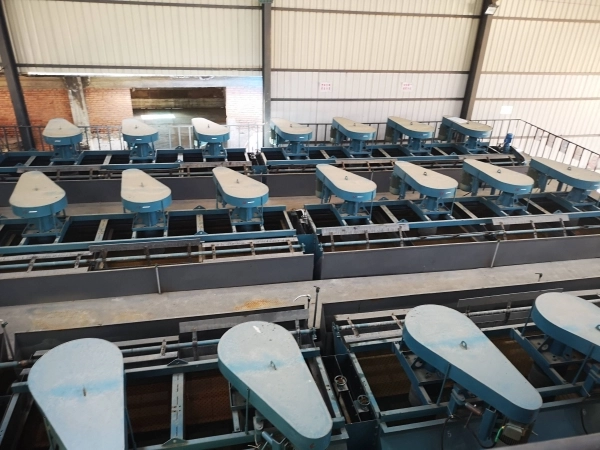
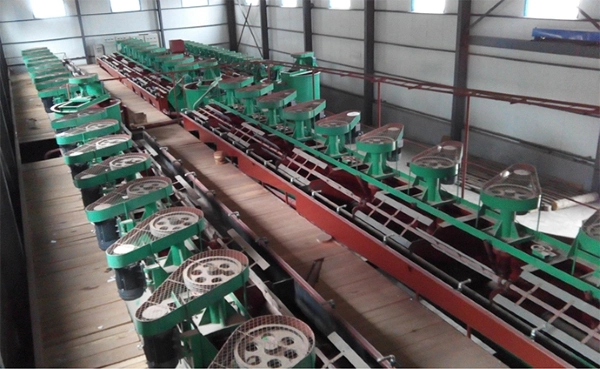


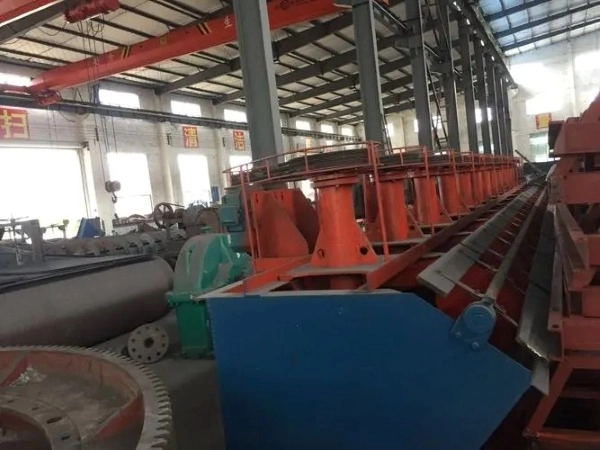
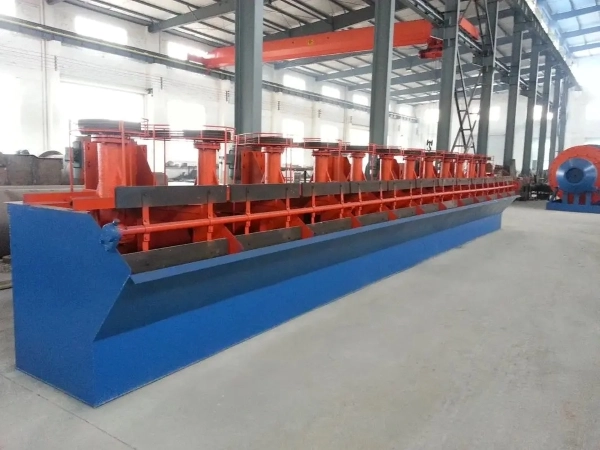
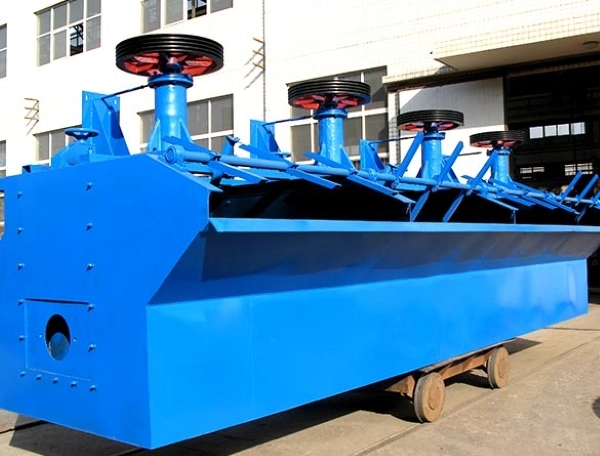
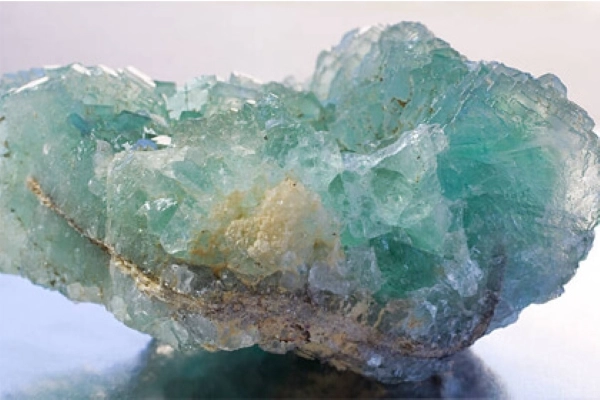

Leave a message with your needs or comments
Add comment: